Travelling through Hokitika in February 2017, we made an unscheduled stop at the marvellous Carnegie Library building on Hamilton Street. I was delighted by this imposing neoclassical building with its arched windows, columns and balustrades, its roof topped by a small tower.
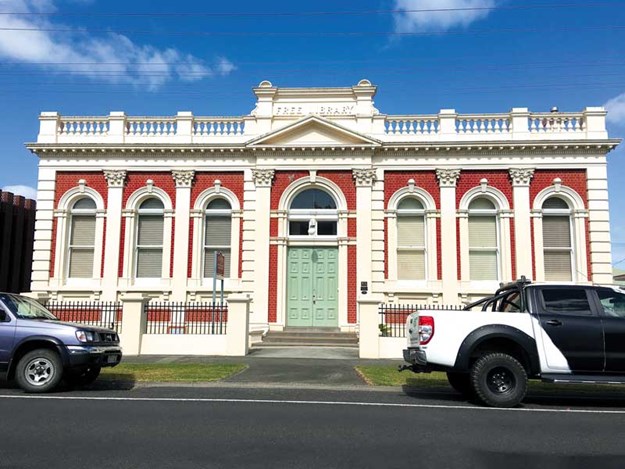 |
The Carnegie Library building in Thames now houses the treasury |
It was almost empty, awaiting seismic upgrading to house the town’s museum. In one room was an exhibition of sketches from The Luminaries (the Man Booker prize-winning novel by Kiwi Eleanor Catton set in Hokitika during the 1860s gold rush).
Behind a reception desk sat a helpful woman who began to tell me about Andrew Carnegie’s connection with New Zealand. I was captivated; I’d heard of Carnegie of course, but I didn’t know much more. “Andrew Carnegie funded 18 libraries in New Zealand, although there are now only 12 left,” she explained.
“I’ve seen six. Only two are still libraries – in Balclutha and Marton. Greymouth’s town hall had a Carnegie wing but an arsonist burnt it to the ground sometime in in the 1940s. The one in Hastings collapsed in the Napier earthquake and they reckon people were entombed in the reading room.”
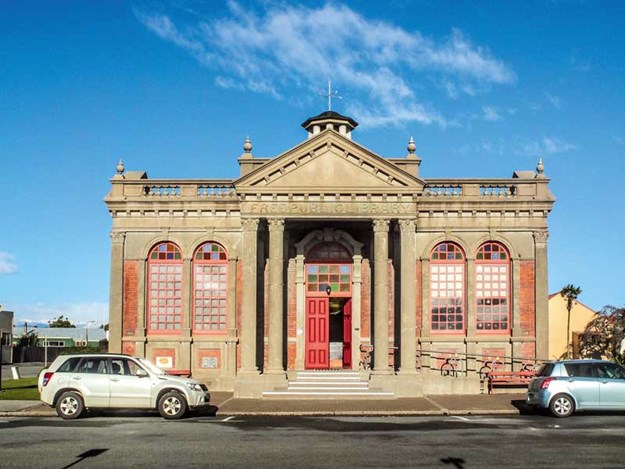 |
The grand Free Public Library edifice in Hokitika awaits seismic upgrading |
Unwittingly, this friendly woman had handed me a mission. I’m a ‘theme’ traveller, and now I had a new quest – the Carnegie libraries of New Zealand.
Themed travel serves no particular purpose apart from the fact that it adds to a journey’s intrigue and can lead to places one might not otherwise consider visiting.
My themes over the years have included the basilicas of New Zealand, the small churches of Northland, quirky toilets, fenced sanctuaries, and weird letterboxes. Although these goals don’t drive the itineraries, I’ll often deviate if it means I can tick another box.
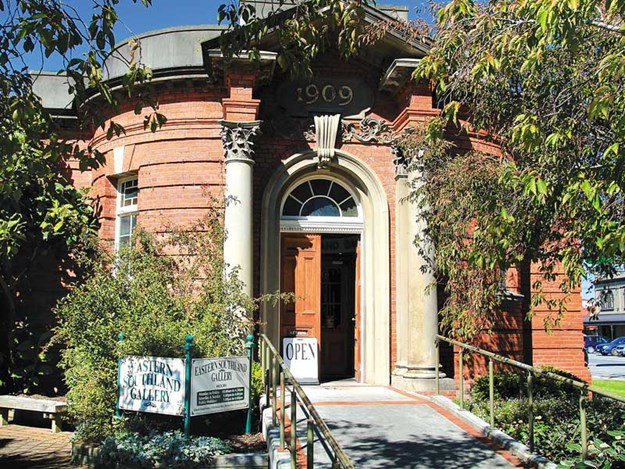 |
Gore’s lovely old Luyten’s-style library, now the Eastern Southland Art Gallery |
I knew the Carnegie hunt wasn’t going to happen in a hurry as the library buildings are widely scattered, but I knocked off one more when I persuaded Bill to drive to Westport. This small, delightfully symmetric old library building is deserted and forlorn looking. Like the one in Hokitika it awaits seismic upgrading. An orange construction fence around it indicated that salvation might underway.
In Westport’s new library I did a bit of research and discovered that Andrew Carnegie, born in poverty in Scotland in 1835, was 13 years old when his family emigrated to America and he began work in a textile mill.
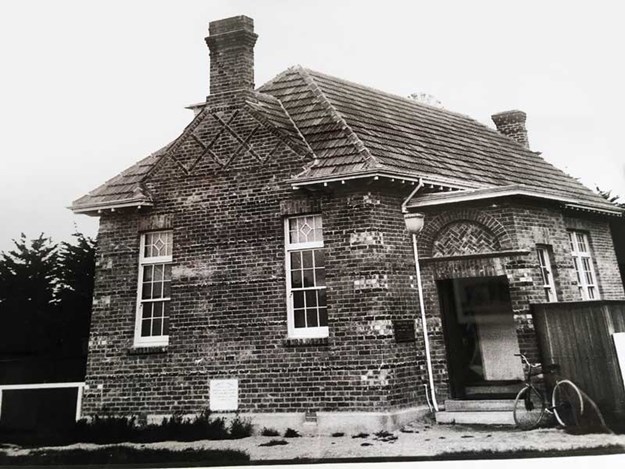 |
An early photograph of the library in Fairlie |
A wealthy local man called Colonel Anderson allowed any ‘working boy’ to borrow from his private library, and the lad from Scotland made good use of the gesture. When Andrew Carnegie later became the doyen of the American steel industry, he attributed his enormous success to that opportunity and gave much of his fortune to the building of free libraries throughout the English speaking world (2509 all up!).
In New Zealand he funded 18 free public library buildings, many of which were an integral part of the town centre along with the town hall, the courthouse, the police station and the post office. His intention (not always carried out by councils) was that people should be able use them at no cost.
A year later, on our way to the Bluff Oyster Festival I persuaded Bill to stop in Balclutha to locate the fully restored, small brick building with elegantly arched windows on John Street. It is one of only two Carnegie Free Libraries in New Zealand that still operates as a library. On our way back north, having had my fill of oysters, I feasted on four more Carnegie libraries.
First, and possibly my favourite, was the stunning little Lutyens-style building in Gore. Built of brick, its rounded walls are topped by an ornate parapet, and two pillars mark the entrance. In 2002 it was totally renovated and is now a gallery for the art works of John Money and Ralph Hotere.
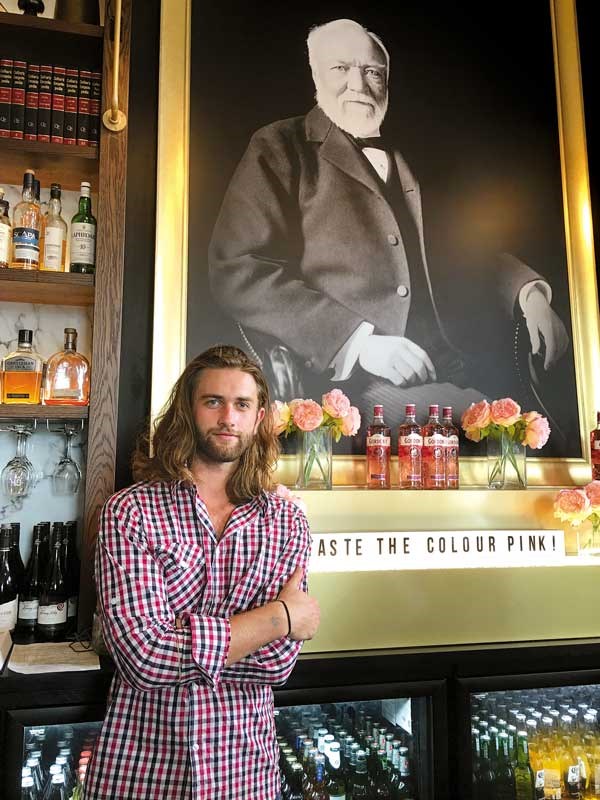 |
Jo, a barman at the Onehunga library restaurant is diminished by the enormous protrait of Andrew Carnegie |
Next was the grand edifice in Dunedin, banded with whitestone and still one of the city’s significant buildings. It now houses the Southern Sinfonia. Carnegie bestowed £10,000 for its construction and in those days that was a tidy sum. He seemed to have had a soft spot for the southern parts of the country, probably because he was Scottish.
Further north in Timaru, there was once a wonderful white stone library, so splendid that the adjacent council offices erected later copied its decorative style. Today only the façade of the library remains, which is probably better than nothing.
North again, the library in Fairlie is cottage-shaped with an oversized chimney. Diamond brick banding and a Scottish terrier depicted in tartan decorate the façade. When first built, it was described by one observer, who must have had a dram too many, as having ‘noble lines’.
When I called in, it was a highly acclaimed restaurant called Carnegies at the Old Library, and was owned by a Scottish man and his wife. It has recently been sold.
I now had six ticks and Bill, understandably, was becoming resistant to the pursuit. For a few months I gave it a rest until, on an unaccompanied expedition in the Rangitikei, I side-tracked into Marton. Here the small unadorned, box-shaped Carnegie building that still functions as a library is painted pale blue and is obviously cherished by the local community.
Later, in Dannevirke, I found the splendid old library with oblong windows and a grand entrance guarded by Corinthian pillars. It was the first building of consequence in the Scandinavian township, but sadly its future is on shaky ground. Earthquakes have cracked the masonry of the façade and restoration is not confirmed. Nine ticks and three to go.
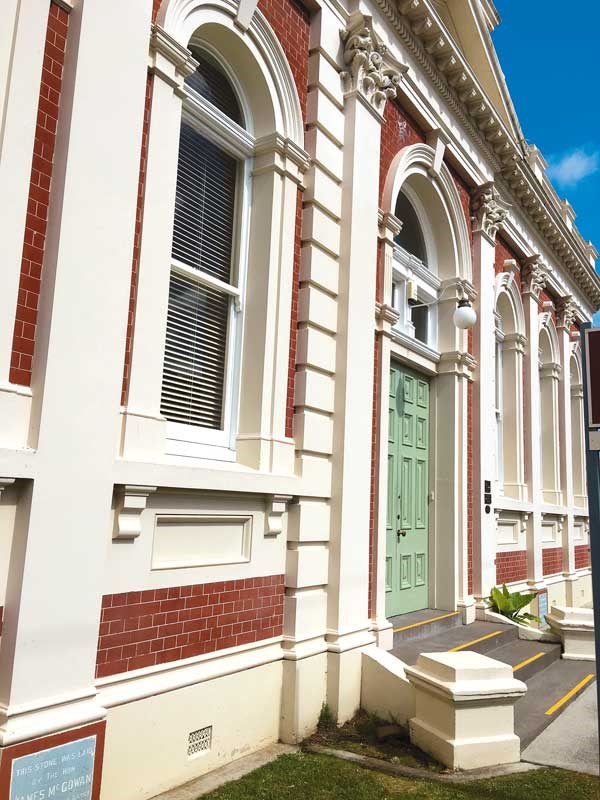 |
Façade of the old Carnegie Library in Thames |
In Cambridge, Carnegie contributed £1000 to build a free public library wing attached to the new town hall that was built in 1909. Today the low-key, cream brick wing serves as the Cambridge i-site. Sadly, there was not one reference to the man who funded it.
My second favourite after the Gore library is in Thames. Embellished with ornate columns and a high decorative parapet, this splendid and beautifully restored Edwardian building now houses the historical records of the Coromandel Peninsula.
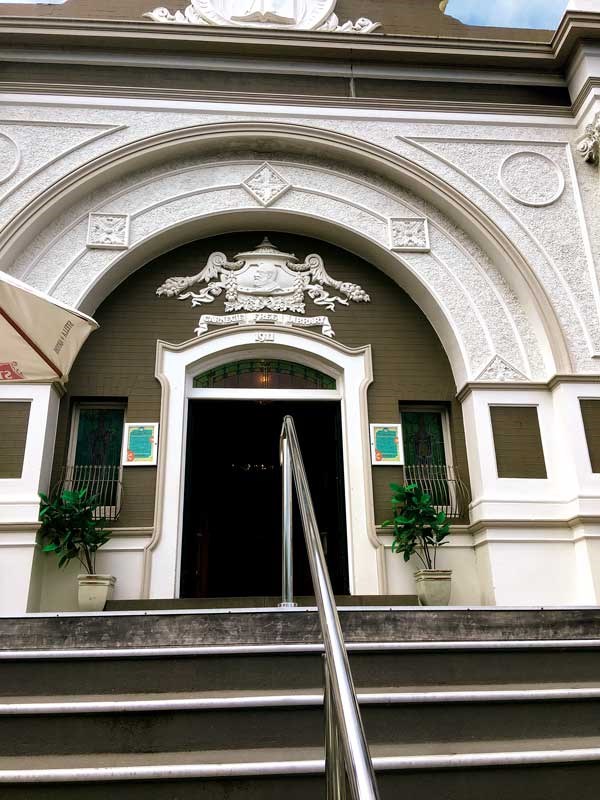 |
Exterior detail of the Onehunga Carnegie building |
Last, but by no means least, is the library in Onehunga. This exuberant edifice is perhaps the most eye-catching of them all and unlike most others, pays full tribute to its original benefactor. The flourishes of Edwardian architectural features include four Corinthian columns gracing the façade, each bearing a different face and topped by an urn.
A head and shoulder image of Andrew Carnegie is carved in stone above the arched entrance. Two years ago the whole building was restored and its impressive interior – with ornate ceiling, cornices and sculptured figures over the architraves – are intact. Part of the original library has been kept. Behind the bar a huge photograph of Carnegie dominates the restaurant, which is now one of the Good Home gastro pubs.
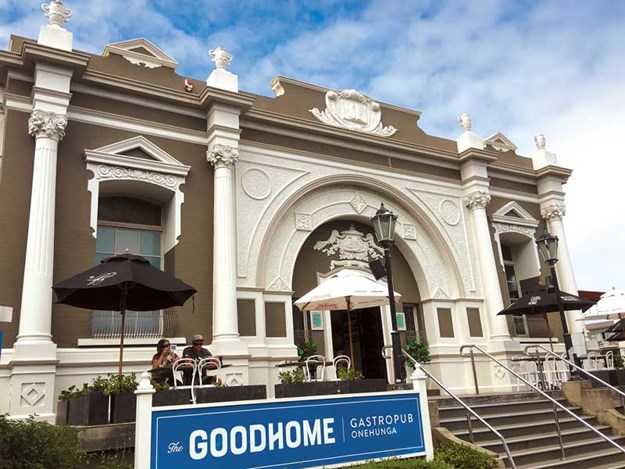 |
The exuberantly decorated old Carnegie library in Onehunga is now a gastro pub |
I can vouch for the food and on display behind the bar is an impressive line-up of gin and single malts from around the world. I ordered a Gordon’s Premium Pink, and mentally raised my glass to the end of the quest and to the looming image of the philanthropist who had so generously encouraged literary enlightenment in a country he never visited.
Carnegie free libraries of New Zealand
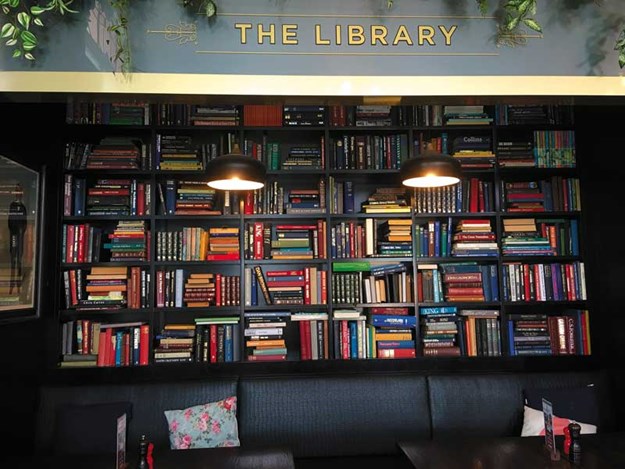 |
Part of the original Onehunga library has been included in the modern décor |
Still existing
- Hokitika
- Westport
- Balclutha
- Gore
- Dunedin
- Timaru
- Fairlie
- Dannevirke
- Marton
- Cambridge
- Thames
- Onehunga
- Demolished
- Greymouth
- Levin
- Hastings
- New Plymouth
- Hamilton
- Alexandra





